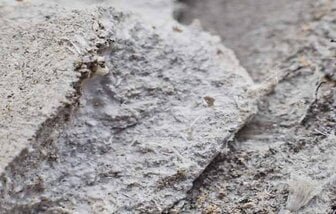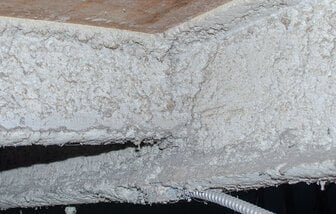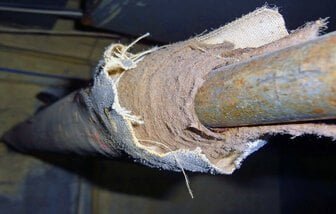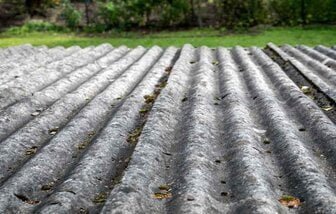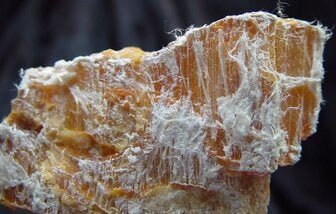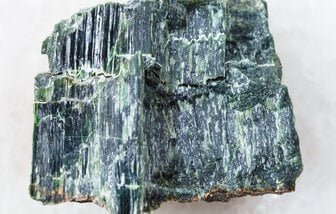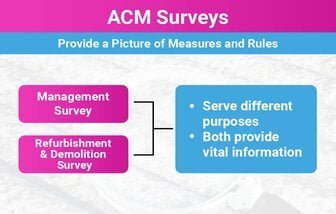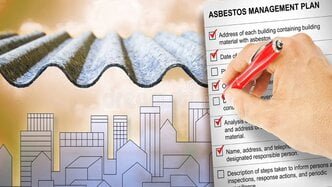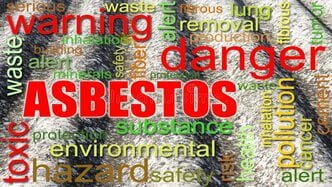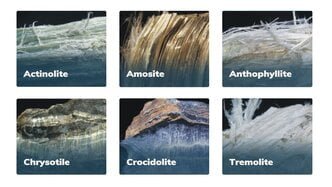What is asbestos cement?
Learn about asbestos cement, a building material made of cement and asbestos fibers. Discover its properties, advantages, common applications, health concerns, and regulations. Find out how to handle and dispose of asbestos cement products safely to protect your health and safety.
Asbestos cement overview
Asbestos cement, also known as asbestos-reinforced cement, is a composite material widely used in construction and manufacturing industries. It consists of a mixture of cement and asbestos fibers, which provide strength and durability to the final product.
In this article, we will delve into the history, properties, uses, and safety concerns associated with asbestos cement.
Asbestos cement was first developed in the late 19th century and gained popularity in the early 20th century due to its fire-resistant properties and low cost.
It was extensively used in the construction of buildings, pipes, roofing sheets, and various other applications. Its widespread use continued until the late 20th century when the health risks associated with asbestos exposure became widely known

Asbestos cement possesses several desirable properties that made it a popular choice for construction purposes. These properties include:
- Fire Resistance: Asbestos fibers in the cement matrix provide excellent fire resistance, making it suitable for fireproofing applications.
- Strength and Durability: Asbestos cement is a strong and durable material that can withstand harsh weather conditions and has a long lifespan.
- Insulation: The presence of asbestos fibers in the cement matrix also provides good thermal and acoustic insulation properties.
- Resistance to Chemicals: Asbestos cement is resistant to many chemicals, making it suitable for applications where corrosion resistance is required.
Common Applications
Asbestos cement found widespread use in a variety of construction applications, including:
- Roofing Sheets: Asbestos cement roofing sheets were commonly used for their durability, weather resistance, and fireproofing properties.
- Wall Cladding: Asbestos cement boards were used for external and internal wall cladding due to their strength, insulation, and fire resistance.
- Pipes and Gutters: Asbestos cement pipes and gutters were widely used for their corrosion resistance and durability.
- Fencing and Siding: Asbestos cement was also used for fencing panels and siding due to its strength and resistance to weathering.
- Water Tanks: Asbestos cement water tanks were popular for their durability and resistance to corrosion.
Despite its numerous advantages, asbestos cement poses significant health risks due to the presence of asbestos fibers. Inhalation of asbestos fibers can lead to serious respiratory diseases, including lung cancer and mesothelioma. As a result, the use of asbestos in construction materials has been banned or heavily regulated in many countries.
It is important to note that intact and undisturbed asbestos cement products do not pose an immediate health risk. However, when the material is damaged or deteriorates over time, it can release asbestos fibers into the air, which can then be inhaled.
Proper handling and disposal of asbestos cement products are crucial to prevent the release of asbestos fibers. In many countries, specific regulations and guidelines are in place to ensure the safe removal and disposal of asbestos-containing materials.
Asbestos cement was widely used in the construction industry in the UK until its ban in 1999 due to the health risks associated with asbestos exposure. Asbestos-containing materials (ACMs), including asbestos cement, can still be found in many older buildings across the country. If you own or are responsible for a property that contains asbestos cement, it is crucial to understand the importance of proper removal and disposal to protect the health and safety of occupants and workers.
Understanding Asbestos Cement
Asbestos cement is a mixture of asbestos fibers and cement, commonly used in the construction of roofs, walls, pipes, and other building materials. While asbestos cement is generally considered less dangerous than other forms of asbestos, it can still pose health risks if it becomes damaged or deteriorates over time.
When asbestos cement is disturbed or damaged, microscopic asbestos fibers can be released into the air. These fibers, when inhaled, can cause serious health problems, including lung diseases and various forms of cancer. Therefore, it is essential to handle asbestos cement with caution and seek professional assistance for its removal.
The Importance of Professional Asbestos Cement Removal
Removing asbestos cement requires specialized knowledge, equipment, and safety precautions. Hiring a licensed and experienced asbestos removal contractor is crucial to ensure the safe and proper removal of the material. Professional asbestos removal companies follow strict guidelines and regulations set by the Health and Safety Executive (HSE) to minimize the risk of exposure and contamination.
Professional asbestos removal contractors will conduct a thorough assessment of the property to identify the presence and extent of asbestos cement. They will develop a comprehensive plan for its removal, including containment measures, personal protective equipment (PPE) for workers, and proper disposal procedures.
The Asbestos Removal Process
The asbestos removal process typically involves the following steps:
- Site Assessment: A licensed asbestos removal contractor will assess the property to determine the presence and condition of asbestos cement.
- Containment: The work area will be isolated and sealed off to prevent the spread of asbestos fibers to other parts of the building.
- Safe Removal: Trained professionals will carefully remove the asbestos cement using specialized tools and techniques to minimize fiber release.
- Cleaning and Decontamination: The work area will be thoroughly cleaned and decontaminated to ensure the removal of any remaining asbestos fibers.
- Proper Disposal: The removed asbestos cement will be properly packaged, labeled, and disposed of according to legal requirements.
Legal Requirements and Regulations
Asbestos removal in the UK is subject to stringent regulations to protect the health and safety of workers and the general public. The Control of Asbestos Regulations 2012 outlines the legal requirements for asbestos removal and disposal. It is essential to hire a licensed contractor who complies with these regulations and holds the necessary certifications.
Conclusion
If you suspect or know that your property contains asbestos cement, it is crucial to take immediate action to ensure its safe removal. Professional asbestos removal companies in the UK have the expertise and knowledge to handle the process efficiently and safely. By following the necessary protocols and regulations, you can protect the health and well-being of everyone involved and maintain a safe environment for occupants and future generations.
The UK Environmental Agency, in collaboration with other regulatory bodies, has established strict regulations and guidelines for the disposal of asbestos cement. These regulations aim to protect the environment and prevent the exposure of individuals to asbestos fibers.
Notification and Licensing
Prior to any asbestos cement removal or disposal, it is essential to notify the relevant regulatory authority. The UK Environmental Agency requires notification at least five days before starting any work involving asbestos cement. Additionally, a license may be required depending on the scale and nature of the project. It is advisable to consult the Environmental Agency or a licensed asbestos removal contractor to determine the necessary permits and licenses.
Safe Removal and Packaging
When removing asbestos cement, it is crucial to follow safe handling practices to minimize the release of asbestos fibers. The use of appropriate personal protective equipment (PPE) is mandatory for anyone involved in the removal process. This includes disposable coveralls, gloves, respiratory protection, and eye protection.
Asbestos cement should be carefully dismantled to minimize breakage and damage. Wetting the material with water or a suitable wetting agent can help reduce the release of fibers. The removed asbestos cement should be double-bagged in heavy-duty polythene bags and securely sealed to prevent any fiber release during transportation.
Transportation and Disposal
Transporting asbestos cement waste requires compliance with specific regulations. The waste must be transported in a vehicle that meets the requirements for asbestos waste transportation, including being appropriately labeled and sealed. The waste should be taken to a licensed disposal facility, where it will be safely managed and disposed of in accordance with the Environmental Agency’s guidelines.
Conclusion
Proper disposal of asbestos cement is crucial to protect the environment and human health. By adhering to the guidelines set by the UK Environmental Agency, we can ensure the safe handling, removal, transportation, and disposal of asbestos cement. Always consult with professionals and licensed contractors to ensure compliance with regulations and to minimize the risks associated with asbestos exposure.
Remember, when it comes to asbestos cement disposal, safety should always be the top priority.
Asbestos Millboard
Millboards manufactured between 1896 and 1965 can contain chrysotile asbestos (up to 97%). Often found in: Pipe runs, electrical gear, vaults, storage. Often used for: Fire protection on structural
Asbestos Cement
Generally containing 10-15% asbestos fibres which are bound in Portland cement or calcium silicate. Uncoated sheets, widely used in the past as a building material can be identified as light grey in
Asbestos Sprayed Coatings
Asbestos sprayed coatings have been widely used in the construction industry in the past, particularly in the United Kingdom
Asbestos Tiles
Learn about asbestos floor tiles in the UK, including their identification, dangers, and management. Find out how to identify asbestos floor tiles
Asbestos Lagging, Ropes & Yarns
Asbestos lagging and ropes were once widely used for their insulation properties. However, due to the health risks associated with asbestos exposure, their use has been banned in many countries.
Asbestos Textured Coatings
Asbestos textured coatings, also known as Artex or similar products, were widely used in the construction industry in the UK from the 1960s to the 1990s. These coatings were applied to ceilings
Corrugated Asbestos Panels
When it comes to garage roofing in the UK, one type of material that was widely used in the past is corrugated asbestos panels. However ue to health and safety concerns, the use of asbestos has been banned
Crocidolite Asbestos
Learn about crocidolite asbestos, a highly hazardous form of asbestos that was widely used in various industries. Discover its properties, health risks, and the importance of professional testing and removal.
Amosite Asbestos
Amosite asbestos, also known as brown asbestos, is a type of asbestos mineral that was widely used in various industries for its heat resistance and insulating properties.
Chrysotile Asbestos
Learn about chrysotile asbestos, its applications, and the potential health risks associated with exposure. Understand the importance of safety measures and regulations to prevent asbestos
Asbestos Surveys
We are able to provide any level of survey required, up to the Demolition and Refurbishment survey now required prior to the demolition of any building or structure.
What is Asbestos?
Asbestos was commonly used as a construction material in the UK between the 1950s and 1980s in particular. If your home was built between these years, chances are that you are living with Asbestos
Asbestos Management Plan
An asbestos management plan is essential for managing asbestos-containing materials (ACMs) in buildings. It aims to protect occupants and workers from asbestos exposure through identification, assessment, and control of ACMs.
Asbestos Dangers
Learn about the dangers of asbestos, its health risks including mesothelioma and lung cancer, and how to protect yourself from exposure. Understand the regulations and laws regarding asbestos, and find resources and support for asbestos-related issues.
Types Of Asbestos
Learn about the different types of asbestos, including chrysotile asbestos, amphibole asbestos, tremolite asbestos, and anthophyllite asbestos. Understand the characteristics and health risks associated with each type of asbestos.
How To Manage Asbestos
Dealing with asbestos requires caution and adherence to proper safety procedures. Identifying asbestos and taking appropriate action is crucial to protect the health and well-being of individuals. If you suspect the presence of asbestos.
Ready to start your project?
Committed to Excellence on all levels
Let's Work Together
Please complete the form below and someone from the Total team will be in touch to discuss your asbestos requirements For urgent needs, our customer support team is available through various channels. You can reach us via phone during business hours, or through our dedicated email support. We are committed to providing timely assistance and ensuring your asbestos concerns are addressed promptly and professionally.


